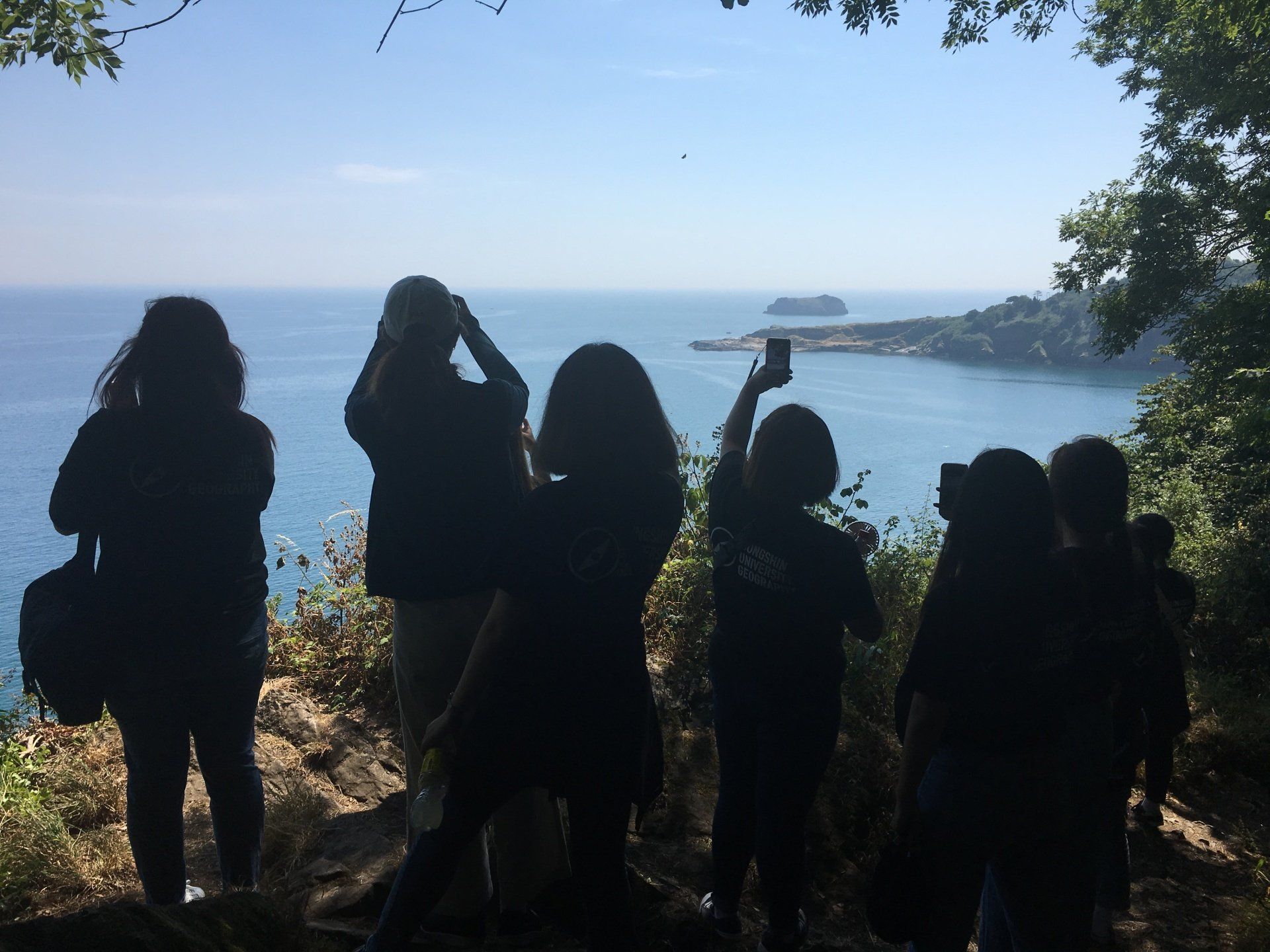Blog
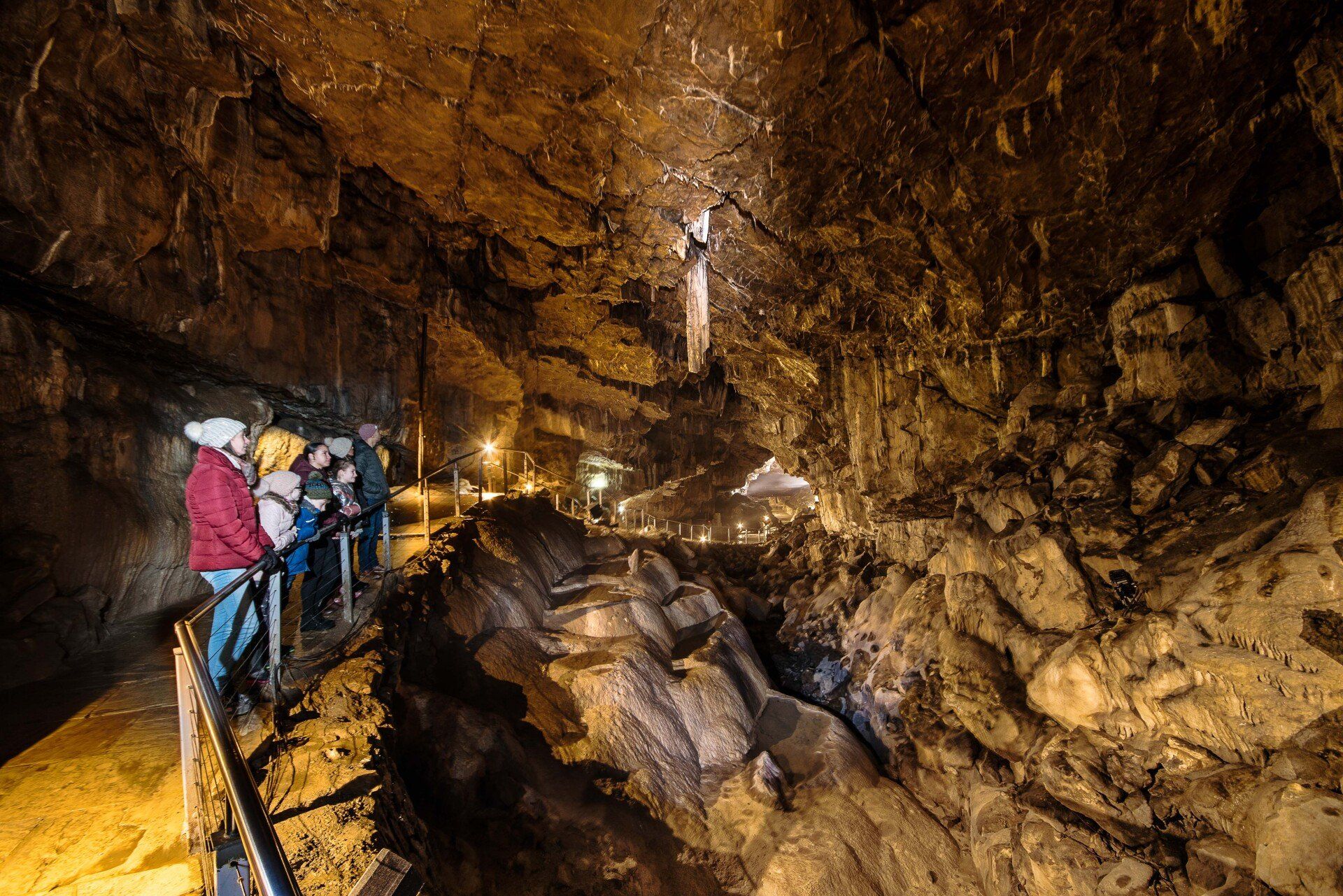
Tuesday morning and I am staying at the New Inn in Clapham, a coaching inn dating from the early 1700s. This is the Yorkshire Dales National Park, one of only ten National Parks in England. Over the next three days I am visiting caves and doing a couple of relatively easy walks in North Yorkshire and Derbyshire. From the New Inn it is a short stroll through the village to the start of the Ingleborough Estate Nature Trail, the path to Ingleborough Cave. Special arrangements are required to be driven to the entrance. The path is lined with exotic planting, an artificial lake and even a folly, created by the Farrer family, according to the information panels along the way. A mile through the woods and a gate leads onto open moorland, and I arrive at the cave entrance. Third time I have been here and I must confess this my favourite cave in England. The arrival, the setting, the cave itself, the guide, all-in-all a great cave experience. The underground stream in the cave runs loud and wild, the lighting is excellent and the tour guide as entertaining as ever. Cold mind you, at only 8C (46F) all year, which in winter feels normal but not the case on a warm summer day. This is a showcave, a natural cave adapted for access, with lights, concrete paths, steps and handrails. England has nine showcaves, caves where you do not need any specialist equipment apart from maybe a hard-hat at some. The alternative cave experience is wild caving but, while fun, we will leave those adventures to members of potholing clubs. The water running through Ingleborough Cave emerges at the entrance and heads down to Clapham, back along the Nature Trail. You can extend the walk past the cave entrance up to Gaping Gill, a spectacular 100-metre deep pothole. It is massive. Every August bank holiday weekend (last weekend usually) the local caving club rigs a rope descent into Gaping Gill. Maybe a way to get interested in wild caving. Back at the car well before lunch, I drive over to White Scar Caves, less than 15 minutes away. Perched on the hill side is their car park and visitor centre, with “Caves” boldly written in white across the roof. This is the longest cave in Britain with its impressive Battlefield Chamber to see deep under Ingleborough. Yes, we are on the other side of the same mountain. When it rains the cave floods, and fast! The guides are used to this but when they say, time to leave, they mean it, especially if you have just reached Battlefield. You might get wet feet here, especially on a wet day which is, of course, the perfect weather for visiting caves. White Scar is just outside the village of Ingleton. If you have time, three hours maybe, do the Ingleton Waterfall Trail, a 7km walk alongside the River Twiss, past Pecca and Thornton Force falls, across open moorland, from where you can clearly see the word “Caves” on the other side of the valley, and back down the River Doe with more spectacular waterfalls. Back in Clapham I head over to the Gamecock in Austwick for dinner, just 2 miles from the New Inn, or 1 mile if you walk. Very nice. Staying in the Dales and after doing the Ingleton Waterfall Trail, on Wednesday morning I head over to Stump Cross Caverns, a 1-hour hop away, but cannot resist stopping at Malham Cove. Not a cave but another nice walk (15 mins) from the village of Malham up to on of Enland’s iconic geological sites, the towering horseshoe shaped limestone cliff-face, where once a giant waterfall cascaded. Today Malham Beck emerges quietly from the base of the cliff. I lunch in the village at the Buck Inn, only because I was parked outside, and the lounge bar’s roaring fire drew me in but there are other great pubs in the village. Suitably refreshed on up to Stump Cross, which like the other two caves, is in the middle of nowhere. If you are touring in a motorhome, you can overnight here. Through the door the steps lead up into the ‘Time Room’ as they call it, with clocks of all sizes decorating the walls framing an endless view towards the setting sun. The food and service are great here. Like Ingleborough, this is family run. You access the caves from the middle of the Time Room. Lots of steps here and some stooping but a nice showcave. This one is self-guided. They have a small cinema telling the story of how the cave was discovered which also doubles up for movie-nights. Nice cup of tea and delicious homemade cake and back to Clapham for a sociable evening in the lounge bar. On Thursday I leave the Yorkshire Dales and head over to Derbyshire, to the village of Castleton, roughly two hours’ drive. This is the Peak District National Park. Castleton has two showcaves, Treak Cliff Cavern and Peak Cavern, and two underground mine attractions at Speedwell and Blue John Cavern. The village has many rock shops because of the famous Blue John stone only found here, valued since Roman times. They say that vases of Blue John stone were unearthed at Pompeii. Treak Cliff Cavern is a mile outside Castleton and here they make jewellery from beautiful purple and blue stone. Family-run, Treak Cliff is a fascinating visit, combining a history of mining with spectacular showcave sections. After Treak Cliff, I drive over to Speedwell Cavern, only 5 minutes away. Not a showcave this one, as the main attraction is a flooded disused lead mine, but it does have some natural cave sections, as indeed does Blue John Cavern. Here you descend a flight of stairs to an underground dock and board a boat that takes you on a gentle meander to the Bottomless Pit. Lots of fun. Blue John Cavern also has many steps. Back up the 100 or so steps into the daylight of Castleton and I head over to Peak Cavern, only a few minutes away, run by the same family as Speedwell. They use an ancient name in their marketing, the Devil’s Arse. The entrance is massive, large enough for a small village to thrive on a rope-making business going back to the Middle Ages. The space is used for demonstrating the craft and as a venue for shows and concerts. Beyond the first open chamber is the cave proper accessed along Lumbago Walk which, as its name suggests, involves a fair amount of stooping. Lots of choice for lunch in the many pubs in Castleton. The majestic town of Buxton is half an hour away, a thermal spa town nestled in the centre of the Peak District National Park. Here we find Poole’s Cavern with a high-wire tree top adventure route run by GoApe at the entrance. Guided tours take you through a well-presented showcave. This cave, like many others puts on events all year round, from underground plays and shows, to Santa experiences. I stayed at the Palace Hotel, a large conference hotel, right in the middle of town, comfortable enough and good value. For more than a stop-over a bit of research will find you somewhere far more special to stay in Buxton. The other three English showcaves are in the south, two in the Mendips in Somerset, Wookey and Cheddar, and the prehistoric caves at Kents Cavern in Devon. You can read about these in my blog Top ten reasons to visit caves in South West England. ENGLAND’S NINE SHOWCAVES – www.visitundergound.com o Cheddar Gorge - www.cheddargorge.co.uk o Ingleborough Caves – www.ingleboroughcave.co.uk o Kents Cavern - www.kents-cavern.co.uk o Peak Cavern - www.devilsarse.com o Poole’s Cavern – www.poolescavern.co.uk o Stump Cross Caverns - www.stumpcrosscaverns.co.uk o Treak Cliff Cavern - www.bluejohnstone.com o White Scar Caves - www.whitescarcave.co.uk o Wookey Hole - www.wookey.co.uk

Having spent time here as a student in the 80s, it was great to be back. This view is from The Law, a stunning panoromic view point where you can take in the entire city, surrounding countryside and the coastline towards Broughty Ferry and the North Sea. The Tay rail bridge stretches over to Fyfe, scene of the Tay Disaster when a train plunged into the Firth of Tay during a winter storm in 1879 as the bridge collapsed. At Discovery Point , the river front now has the V&A Dundee and the Royal Research Ship Discovery , built in Dundee, this is the ship that took Scott and Shackleton to Antarctica in 1902.
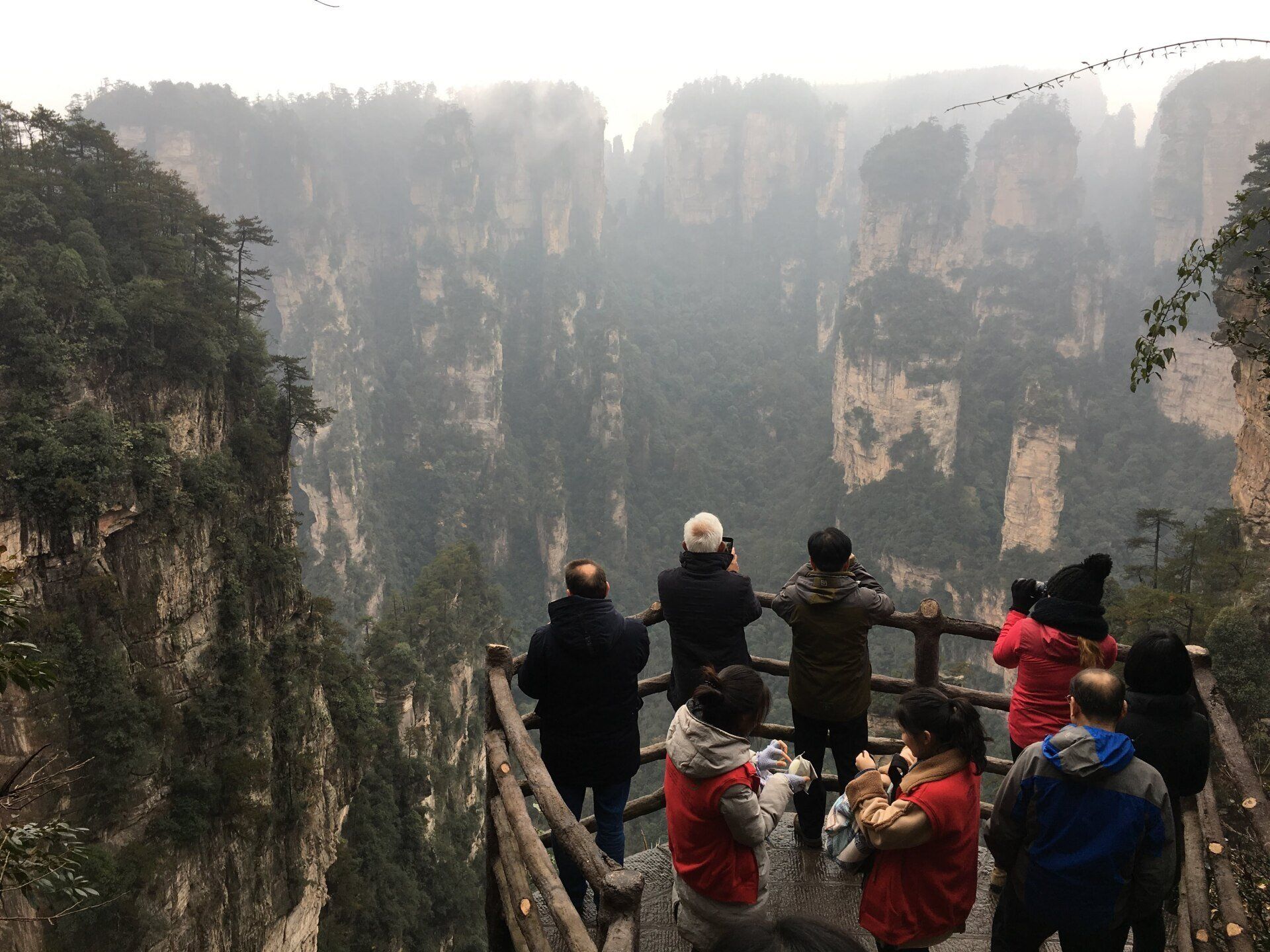
Just north of Ullapool, on the road to Durness in the Highlands of Scotland, we are driving through the most spectacular scenery. On the side of the road is a sign, welcoming travellers to the North West Highlands UNESCO Global Geopark (UGGp). The word “Geopark” seems to perfectly describe the place, stunning mountains, information pods describing how mountains are formed, very few houses, very few people, a field-study centre, the odd B&B, single track roads and lots of rocks. What a place. After a few days we head south, stopping off at Skye and Oban. We cross the border back into England at Gretna and 20 miles on at Carlisle in Cumbria, we take the A69 east into the North Pennines UGGP, a vast area of nearly 2,000km2 in northern England, lying south of the A69 between Carlisle and Newcastle-upon-Tyne. We are heading for the Bowless Visitor Centre in Middeton-in-Teesdale, gateway to the UNESCO designated area of outstanding natural beauty, close to Barnard Castle, a popular beauty spot you may have heard of. This Geopark offers a huge range of activities, including horse-riding and stargazing. From the visitor centre, which, by the way does a lovely cup of tea and cakes, it is an easy 20-minute walk to see England’s biggest water fall at High Force. Back in the car and we re-join the M6 motorway heading south. Just before Birmingham the traffic is building, so we decide to take a detour, leaving the motorway at Walsall and head west towards Dudley. This is the Black Country, split by the M6, an urban area once referred to as “The Workshop of the World”. Industrial Revolution country, riddled with canals and abandoned mines, a fascinating window into England’s industrial heritage. Rocks and mineral deposits here not only defined geology but helped shape the World. This is also a UNESCO Global Geopark, very different to the Geoparks we have been in, but nonetheless a place where geology is embedded in the local culture. Here the undulations of the road and the wall ties on the sides of houses are clues to ongoing subsidence from the network of disused tunnels below the surface. This is a surprising beautiful part of England with a rich urban heritage connected to a time when it was “black by day and red by night”, captured in paintings by the English painter JMW Turner in the 1830s in Dudley Museum. Back on the road and we arrive in Devon, over 700 miles from the Highlands. We drive into the seaside resort of Torquay, famous as the birthplace of Agatha Christie and the inspiration for the cult British comedy Fawlty Towers. A massive sign welcomes us to the English Riviera UNESCO Global Geopark. We head for the seafront. Here sea cliffs surround us, some pink limestone, and others brilliant red sandstone, from a time when this land was scorched by the Equatorial sun. A couple walk past us, in shorts, t-shirt and walking boots, waterproofs covering their bulging backpacks, and I remember, the 630-mile South West Coast Path, the UK’s longest trail, goes through this Geopark. The walk from Minehead in Somerset to Poole in Dorset takes about 52 days, but these two look like they have the 30-day target in mind. Here again we are surrounded by inspiration and natural beauty rooted in geological heritage. Four very different areas of the United Kingdom connected by geology. There are eight Geoparks in United Kingdom, two in Scotland, three in England, two in Wales and one in Northern Ireland. They are among 160 Global Geoparks around the world, each uniquely interesting, some sparsely populated, others urban, others coastal, some mountainous, but all with a story to tell about Earth or “Gaea” in Greek mythology. This is where the word 'geology' comes from, “gaea-ology”, the study of Earth. Some Geoparks you may know well, not realising they hold the prestigious UNESCO label. The Cliffs of Moher, for example on the west coast of Ireland, part of the Burren and Cliffs of Moher UGGp. The archipelago of nine islands in the middle of the Atlantic, form the Açores UGGp, one of five in Portugal. The island of Lesvos in Greece is a Geopark. The area surrounding the Icelandic volcano with the unpronounceable name, Eyjafjallajökull, is the Katla UGGp. Yes, that is the one that erupted in April 2010 causing air travel chaos, and we all have a travel story to share about that, don’t we! China has 41 Global Geoparks. Three have close connections with the English Riviera UGGp through the “sister-geopark” programme. Zhangjiajie UGGp is spectacular with tree-topped limestone pillars reaching into the clouds, accessed by mountain-side elevators and cable cars, a spectacular and unreal landscape used in the movie Avatar. Fangshan UGGp Geopark, in the suburbs of Beijing has the World Heritage Site of Zhoukoudian cave, home to the Peking Man fossil remains, and then there is Hong Kong UGGp, just one hour’s drive from downtown Kowloon. This Geopark has similar hexagonal rock columns, formed by cooling volcanic ash and lava, seen at the Giant’s Causeway World Heritage Site in Northern Ireland. The UNESCO Global Geoparks programme is not the same as World Heritage but many Geoparks have World Heritage Sites in their territories. Every Global Geopark has something special to say about its rocks, maybe outstanding examples of a certain rock type or examples of processes that shaped the planet. For example, the reason you can find seashells on the summit of a two kilometre high mountain in the French Alps is explained in the Massif des Bauges UGGp where continental collisions in deep-time forced seabeds to the top of mountains. The North West Highlands UGGp has the oldest rocks found in Europe, three-billion-year-old Lewisian Gneiss and it is here that Victorian geologists demonstrated mountain-building processes. The English Riviera UGGp is where, in the 1830s, geologists identified 400 million-year-old marine sedimentary rocks giving rise to the naming of the Devonian period of geological time. The caves at Kents Cavern in Torquay are home to Britain’s oldest human fossil, a 41,000-year-old jawbone, revealing a story of ancient human nomadic movement across landbridges that once connected England to continental Europe. You may wonder why places with spectacular rocks are not UNESCO Global Geopark. Amazing geology alone is not enough. Global Geoparks must have a unified boundary and this territory must be proactively managed by an organisation working on priorities in environment responsibility, sustainable development, delivering quality visitor experiences connected to the local geological heritage. Known as geotourism, experiences offered in Global Geoparks include cave tours, canal trips, wine tours, local culinary experiences, learning sessions (like courses in photography, landscape watercolour or dry stone walling), star gazing, walking trails, augmented reality mobile phone apps, sea kayaking adventures, coasteering, children’s rock-detective clubs, stone age schools. The list goes on but they all have a connection to the geology. Each Geopark will have a programme of events and can connect you with a professional tour operator to build a bespoke itinerary to suit your interests and abilities. Hopefully, I have persuaded you to seek out UNESCO Global Geoparks as you travel around Engand and the World. The 160 are listed here http://www.globalgeopark.org/ . Look out for geotourism experiences that get you closer to Earth, closer to “Gaia”, the mother of everything beautiful in the World, according to Greek mythology, anyway.

Driving north on the A1, we stopped at Antony Gormley's stunning Angel of the North, (free to visit) before driving on past Newcastle (upon-Tyne) stopping overnight at the Doxford Hall Hotel and Spa at Chathill. A stunning country house hotel with outstanding grounds and facilities. Lovely food, rooms and faciities. Over to Bamburgh Castle, the next morning, about 25 miles away, through the Northumberland countryside. We could have stayed In Bamburgh, lots of choice but a little pricey. The castle is privately owned by the Armstrong family. Then on to the Holy Island of Lindisfarne. The causeway to Holy Island can only be driven at certain states of the tide as . the road is completely covered over by the rising tide. The words of 15th century English poet Chaucer spring to mind: " Time and tide waits for no man ". The island is a wacky place and fun to visit. Then afternoon tea in Berwick-Upon-Tweed. Three spectacular bridges over the river Tweed dominate the town There is a really nice circular rampart walk around the town with a lovely connection to the famed English painter LS Lowry. Click for more info about visiting Northumberland
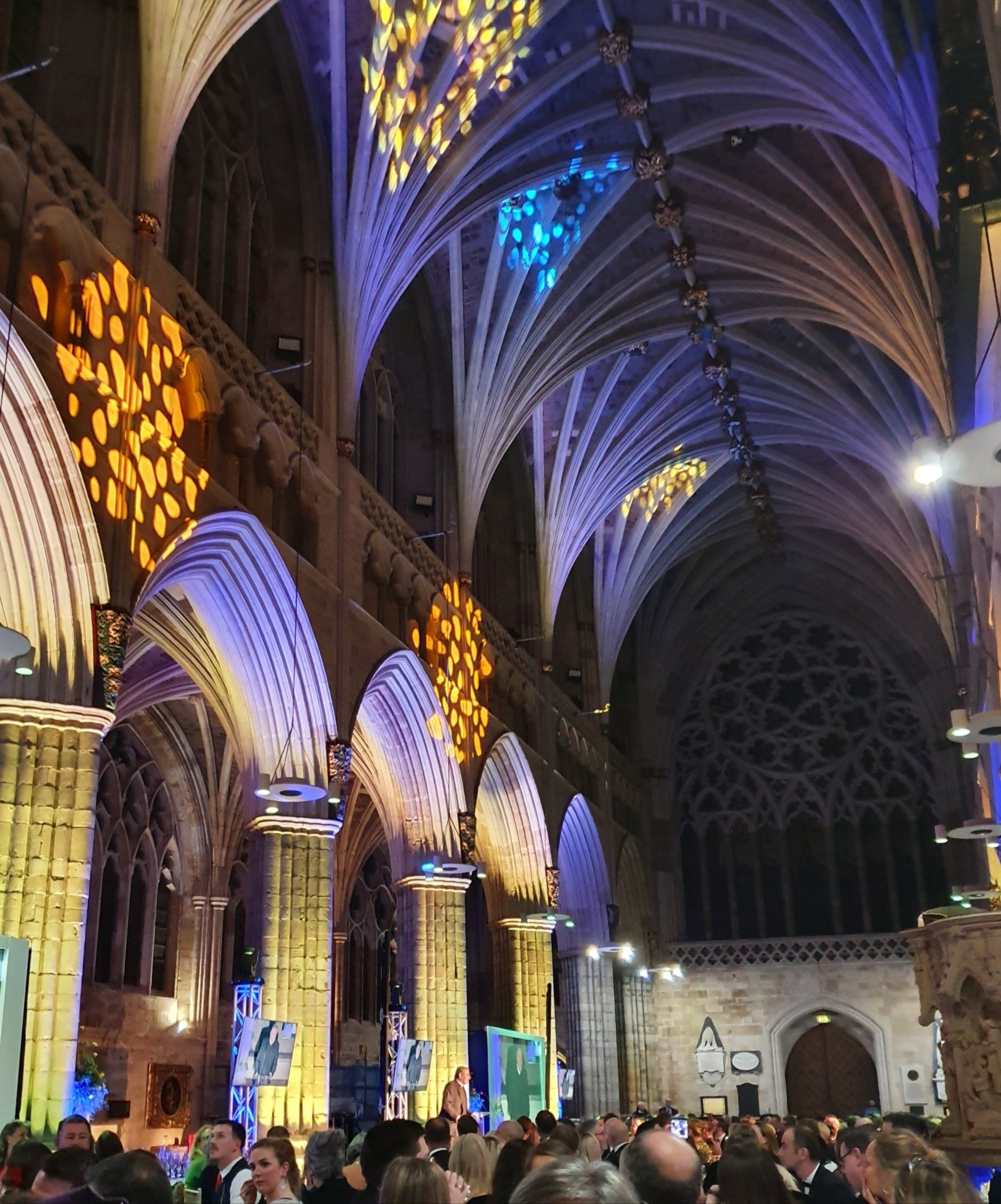
I joined 370 other colleagues from the tourism industry at the 2020 South West England Tourism awards last week as 100 awards were presented to the 770 entrants from across Devon, Cornwall, Dorset, Somerset, Wiltshire, Gloucestershire and Bristol. Here are the 2020 Gold award winners in the South West of England: B&B - The 25 Boutique B&B Torquay Devon the25.uk Small Attraction - Salcombe Distilling Co., Salcombe, Devon salcombegin.com Small Hotel - Paschoe House, Crediton, Devon paschoehouse.co.uk Tea room - Yellow Bicycle Cafe, Blandford Forum, Dorset Glamping - The Treehouses, West Hayes, Somerset - treehouseholidays.co.uk Large Hotel - Lucknam Park Hotel & Spa, Thickwood, Wiltshire lucknampark.co.uk Large Attraction - Roman Baths & Pump Room, Bath romanbaths.co.uk Pub - Three Horseshoes, Burton Bradstock, Dorset threehorseshoesburtonbradstock.co.uk Restaurant - The Dining Room, Whatley Manor Hotel, Wiltshire whatleymanor.com Other category winners together with second and third places can be found at southwesttourismawards.org.uk
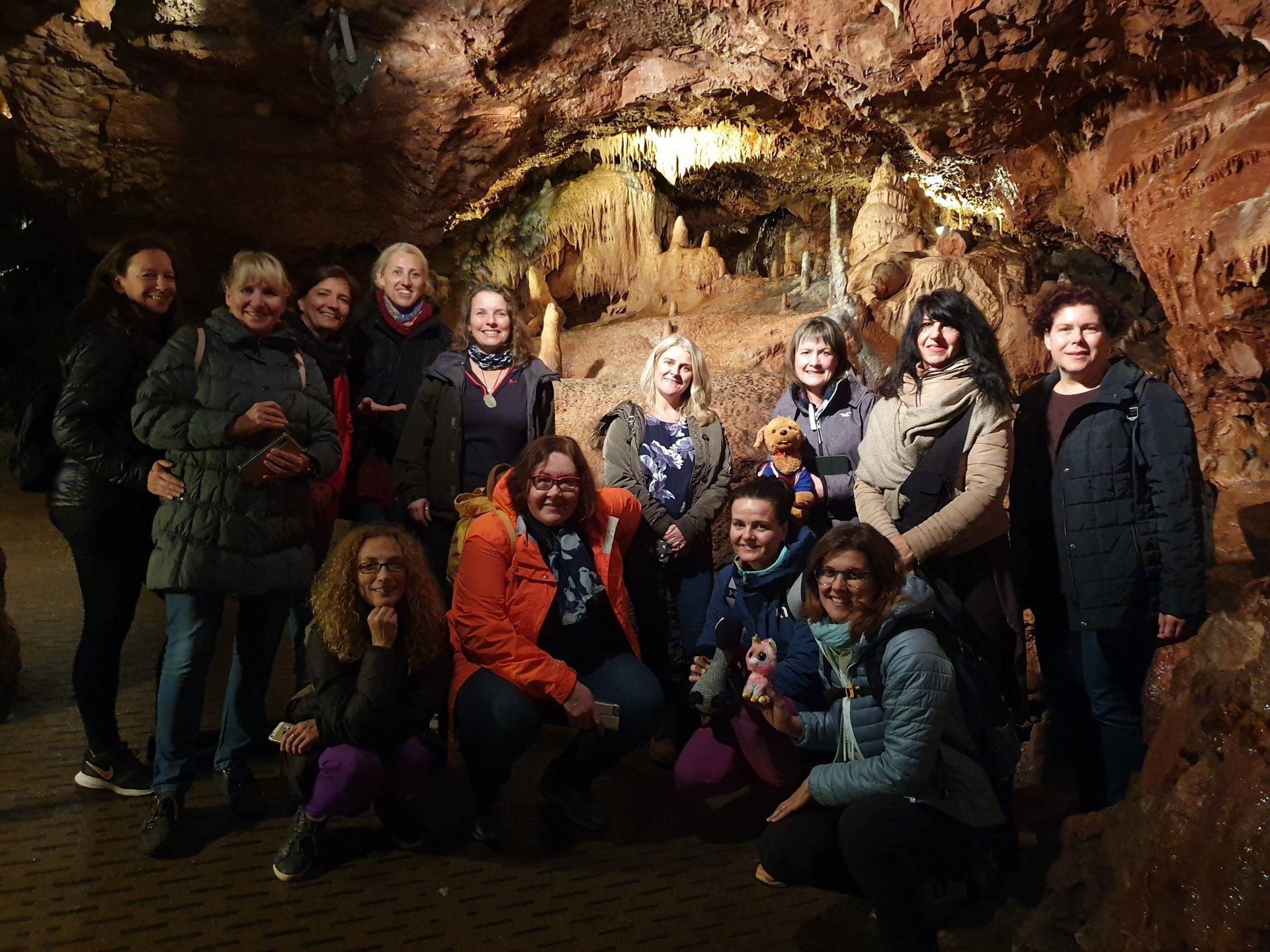
Caves are remarkable places where time stands still. Many are associated with life, human and animal, when temperatures outside were very different to today, sometimes much hotter and at other time much colder. Underground temperatures remain fairly constant and while seasons come and go on the surface, cave environments change little. Some chambers are noisy from the sound of gushing water while other passages are completely silent. The UK has some spectacular natural caves accessible without specialist equipment. From Ingleborough Cave in North Yorkshire to Kents Cavern in South Devon, here are my top 10 reasons to visit a cave: 1. Stay cool or warm up 2. Cave guides are interesting and entertaining 3. Find out what total darkness is like 4. Spectacular natural formations to see 5. Experience something unexpected: watch a film in a pop-up underground cinema or to find Santa 6. Go to the same place used by Stone Age people thousands of years ago 7. Every cave has it's own unique stories 8. Unusual photo and sketching opportunities 9. Learn about the geological process that create caves 10. Above all - it's good for you Take a look at visitunderground.com
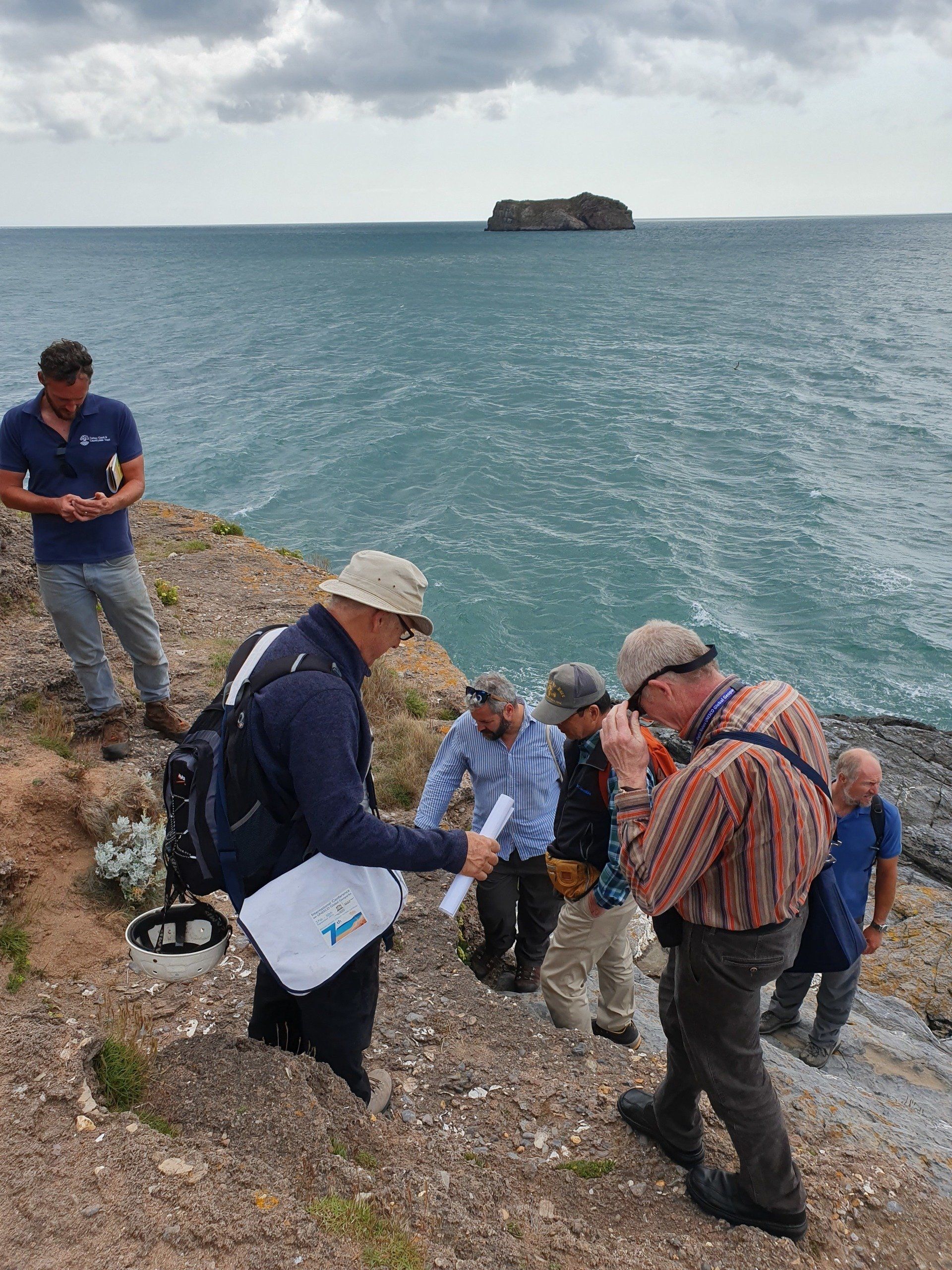
South Devon's English Riviera is sharing the European Geoparks Network's celebrations. Created 20 years ago, the network admitted Torbay's three towns of Torquay, Paignton and Brixham in 2007 leading to the English Riviera gaining full UNESCO status in 2015. The prestigious UNESCO Global Geopark (UGGp) designation, now proudly displayed on gateway entrance road signs, acknowledges the outstanding geological heritage here. It also recognises the sites of international significance like Kents Cavern, Torquay Museum, Brixham Museum, Torre Abbey, Hopes Nose, Berry Head, but it's the rich cultural heritage, the creative and community engagement found here, and the award winning Geotourism experiences on offer that maintains the UGGp status. Torbay is one of 75 quality destinations across 26 countries in Europe and 147 extraordinary places around the World committed to sustainable developments in tourism and living. Torbay and the English Riviera has had a massive role supporting the global success of the European Geoparks Network and the UGGp programme.

